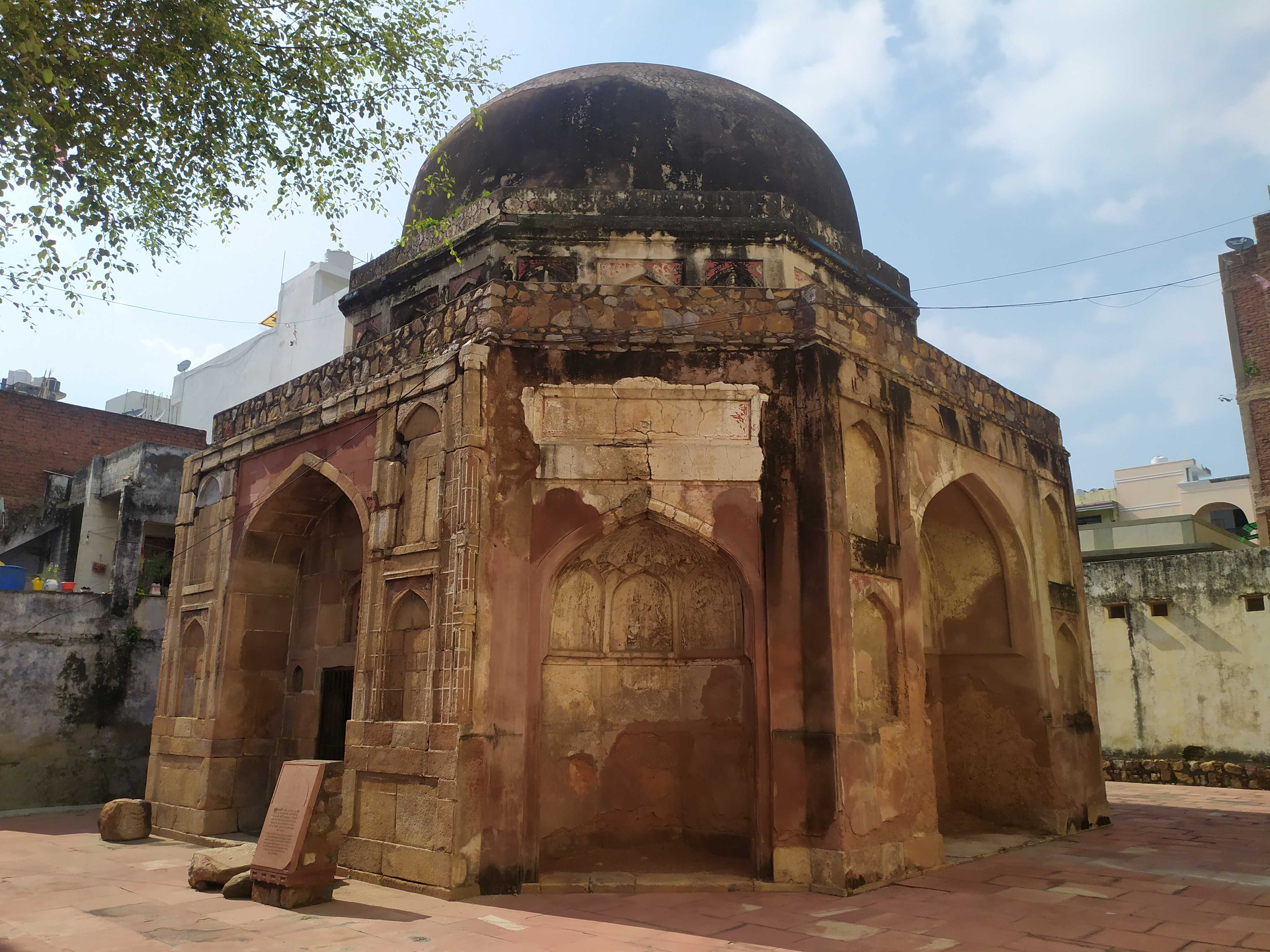
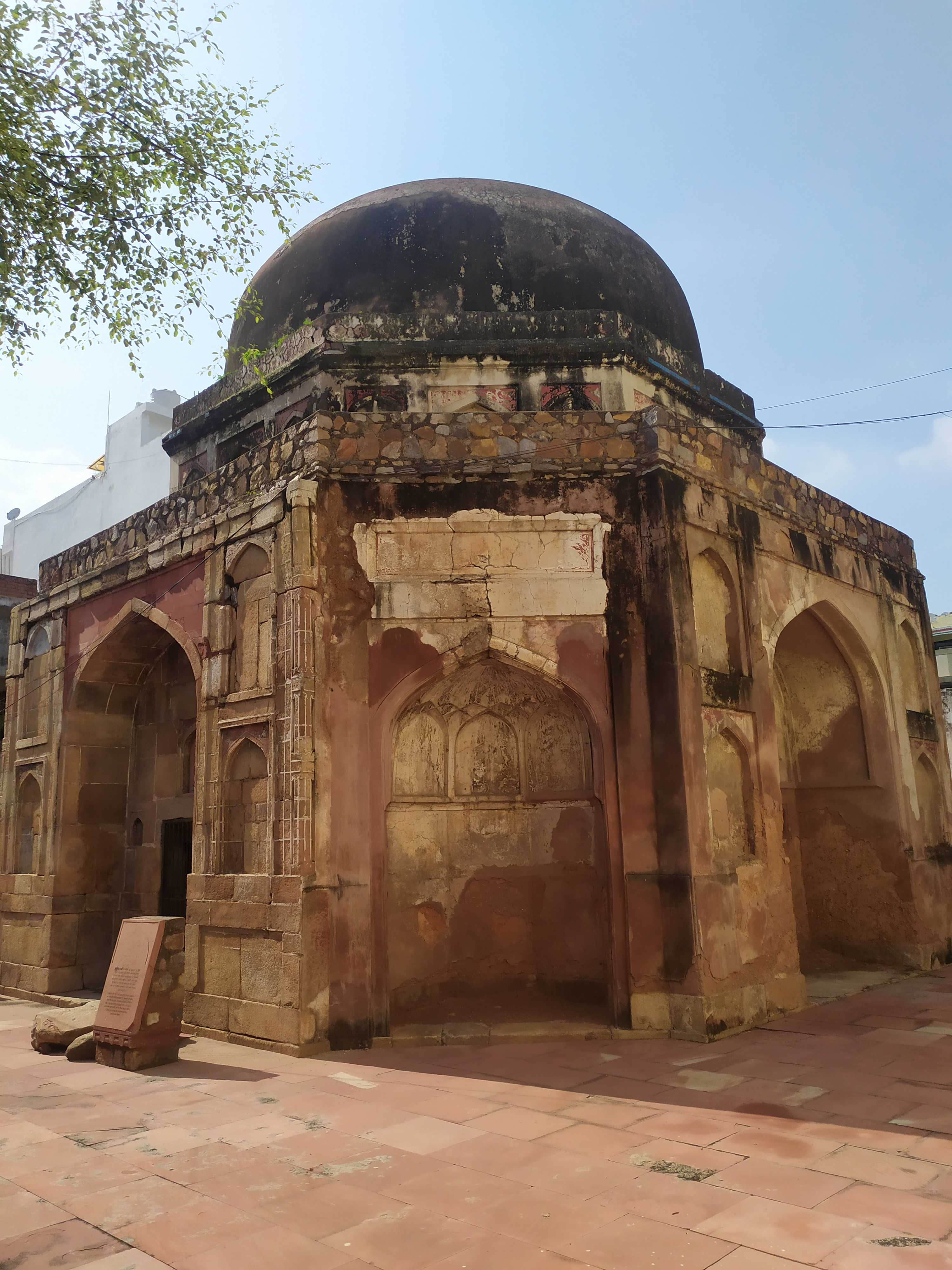
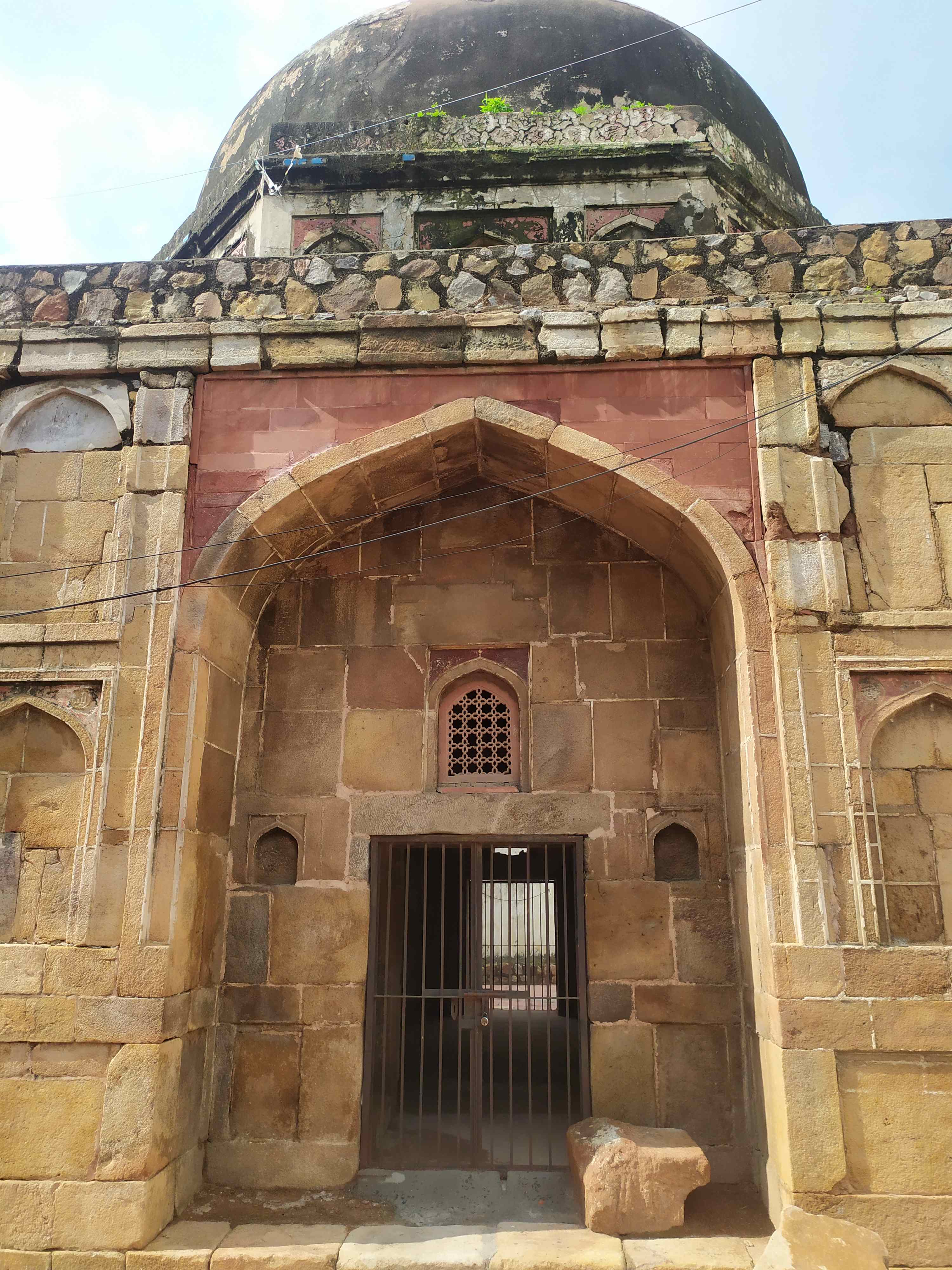
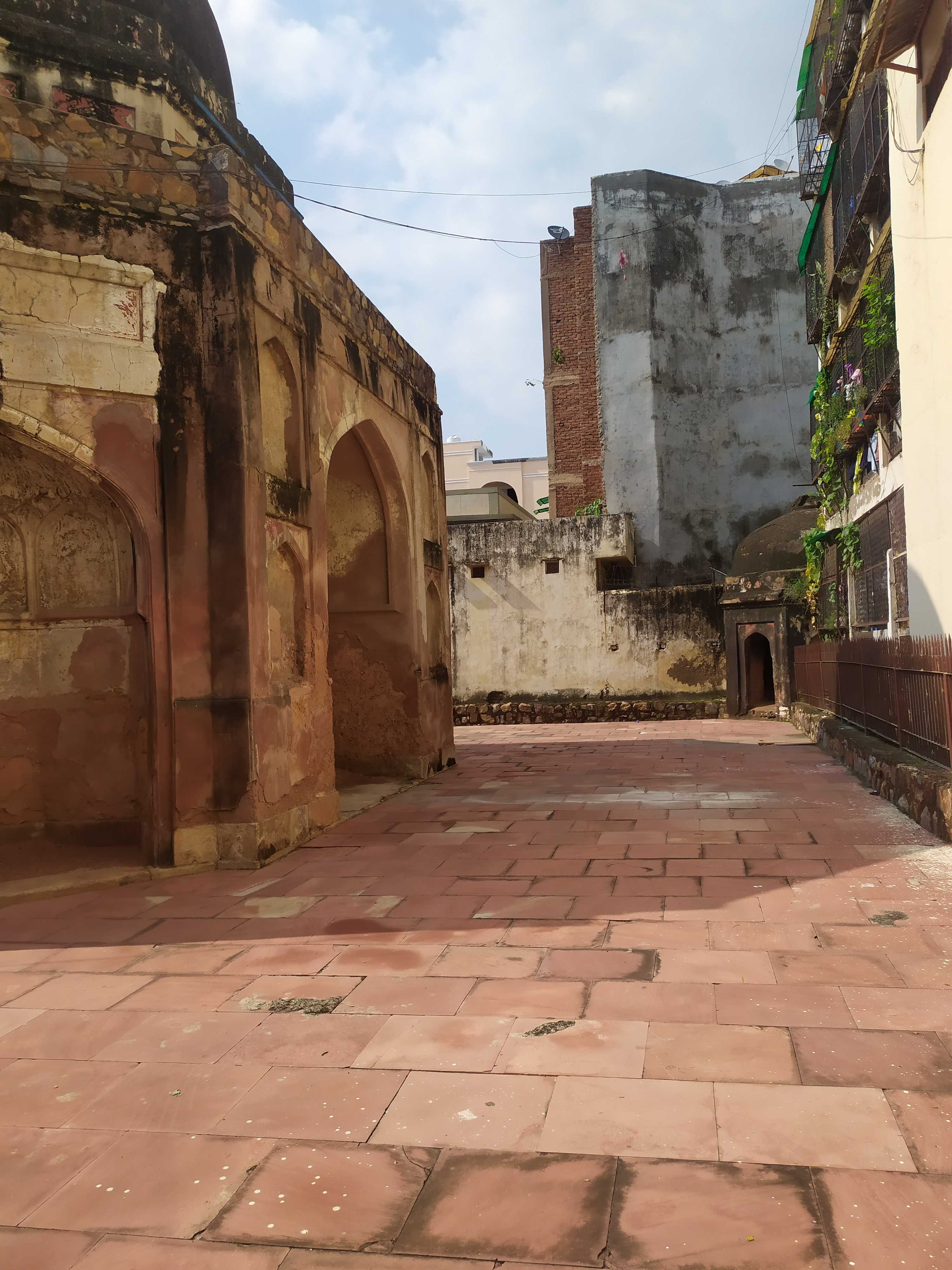
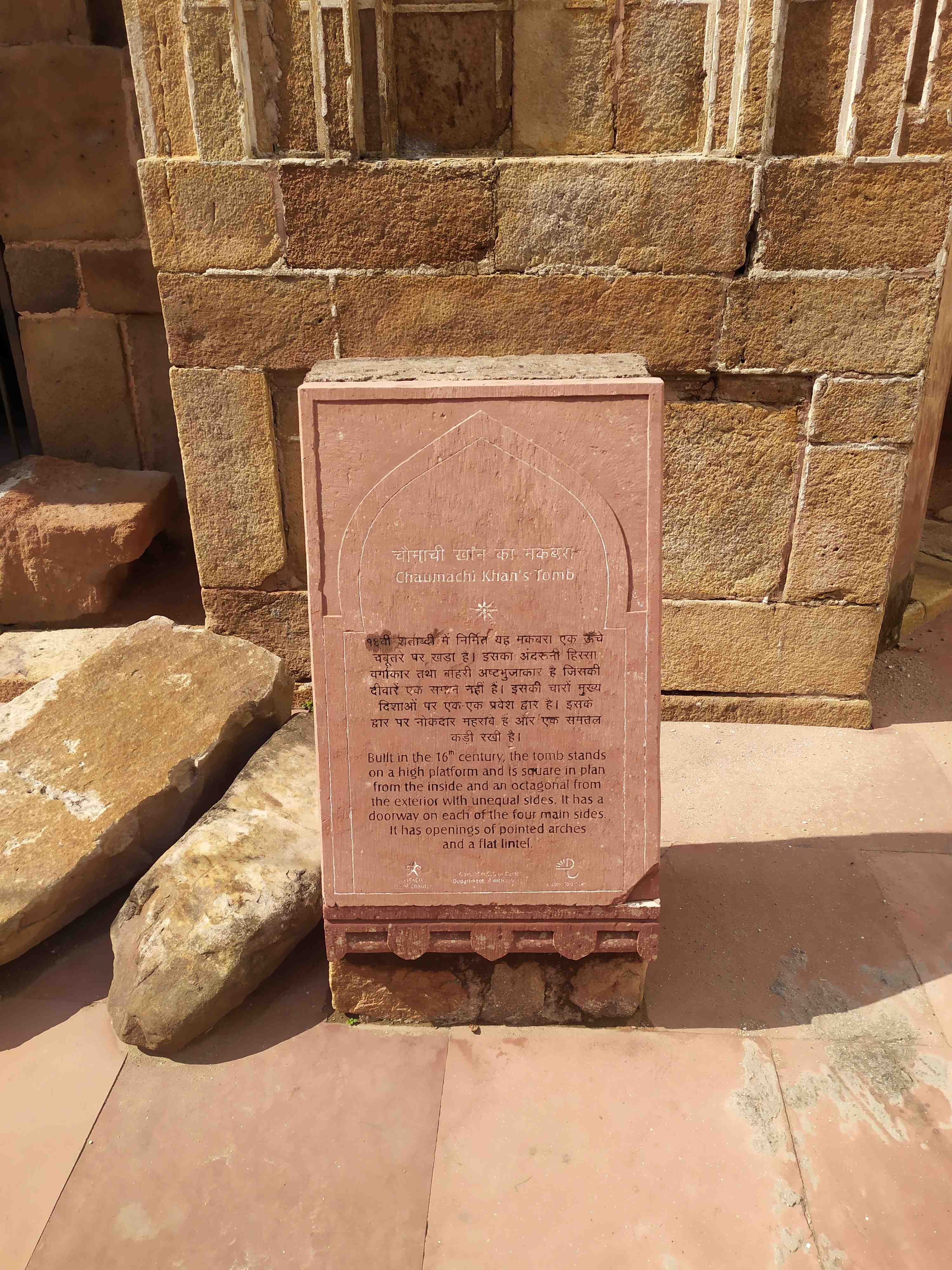
In the heart of Delhi, where layers of history intertwine like the intricate patterns adorning its monuments, stands a structure that embodies the transition between two golden ages of Islamic architecture in India. Chaumachi Khan's Tomb, also known as Kali Gumbad, is a 16th-century marvel that whispers tales of artistic evolution and historical intrigue to those who pause to listen. The very name of this monument is shrouded in mystery, much like the fading frescoes that adorn its walls. "Chaumachi," as it turns out, is likely a linguistic corruption of "Shamsuddin," hinting at the true identity of its occupant. This name transformation mirrors the tomb's journey through time, adapting to changing pronunciations while steadfastly preserving its essence. Perched atop a platform that once boasted the symmetrical perfection of four domed chattris at its corners, the tomb now retains just one at its northeastern edge - a lone sentinel standing guard over centuries of change. This solitary surviving chattri serves as a poignant reminder of the passage of time and the resilience of architecture in the face of it. The structure itself is a study in geometric harmony and architectural innovation. Its external octagonal plan gives way to a perfect square chamber within, a design that speaks to the mathematical precision favored by Islamic architects of the period. Step inside, and you're immediately transported to a world where art and faith intertwine in a mesmerizing dance of form and function. The tomb's interior bears the unmistakable hallmarks of Mughal aesthetics. Painted floral motifs and intricately decorated spandrels of the arches showcase the artistic sensibilities that would come to define an entire era of Indian architecture. The ribbed vaulted squinches that support the dome are not merely structural elements but works of art in their own right, demonstrating the architectural ingenuity that allowed for the creation of such grand spaces. Yet, amidst these clearly Mughal features, the dome tells a different story. Squat and rounded, it pays homage to the preceding Lodi dynasty, creating a visual bridge between two distinct periods of Islamic rule in India. This blending of styles makes Chaumachi Khan's Tomb a unique testament to the evolving architectural landscape of 16th-century Delhi. The walls of the tomb are not mere stone; they are pages of history, albeit weathered and faded. Remnants of intricate paintings still cling to the surfaces, offering tantalizing glimpses into the artistic sensibilities of centuries past. These fading masterpieces serve as a poignant reminder of the ephemeral nature of human creation and the enduring spirit of art. Maulavi Zafar Hasan, in his monumental documentation of Delhi's monuments published in 1920, brought this hidden gem to light. He dated the tomb to the early Mughal period, speculating on the true identity of Chaumachi Khan. Hasan's work also recorded three ruined graves within the tomb, though today, only the remains of one grave can be found inside the chamber - a solitary testament to the lives it was built to commemorate. The journey of Chaumachi Khan's Tomb through the centuries has not been without peril. In a twist of fate that mirrors many of Delhi's historical structures, it narrowly escaped demolition at the hands of modern progress. The Delhi Development Authority (DDA) had allocated the land to a builder, and the monument stood on the brink of being erased from the city's landscape. It was only through the vigilance and intervention of conservationists that this architectural gem was saved, allowing it to continue standing as a defiant bastion of heritage amidst the city's ever-changing skyline. Today, Chaumachi Khan's Tomb is a monument and a living piece of Delhi's Islamic heritage. It embodies the syncretic architectural styles that flourished in the twilight of one dynasty and the dawn of another. More than stone and mortar, it is a tangible link to our past, a silent storyteller of the city's enduring legacy. As one stands before its weathered walls, imagination takes flight. In the play of light and shadow on its ancient stones, in the whisper of the wind through its arches, one might hear the echoes of a glorious past. The tomb serves as a reminder of the rich tapestry of Islamic culture that has shaped Delhi's identity, and the importance of preserving these treasures for future generations. Chaumachi Khan's Tomb is more than just a historical curiosity; it is a testament to the enduring spirit of art and architecture. It challenges us to look beyond the surface, to delve into the stories encoded in stone and paint. In doing so, we connect with our past and gain a deeper appreciation for the cultural forces that continue to shape our present. As Delhi continues to evolve, monuments like Chaumachi Khan's Tomb stand as anchors, grounding us in our rich history while inspiring us to build a future that honors and preserves the best of what came before. It is a call to action for all who value heritage, a reminder that the stories of our past are the foundation upon which we build our future.